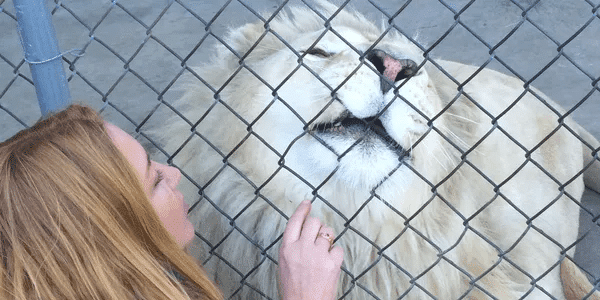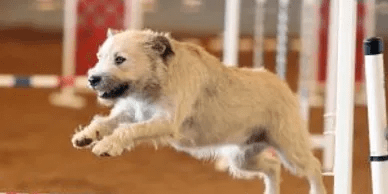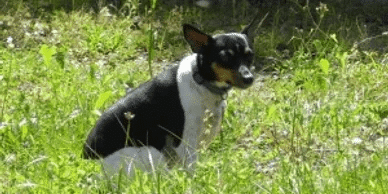Telepathic animal communicator, counselor, and energy healer

What is a telepathic animal communicator?
As a telepathic animal communicator and counselor, I help to foster understanding and resolve problems in a multi-species household. In addition, when simple understanding and compromise isn’t enough to achieve harmony, I utilize energy healing for animals, humans, and situations. I am trained in several powerful modalities, including Body Talk, Matrix Energetics, and Master-Level Reiki. Proximity isn’t an issue, which means that it doesn’t matter whether my clients are in my zip code. It doesn’t matter whether they are in physical form or have passed over to spirit. Remote sessions can be just as powerful and accurate as in-person visits.
How does telepathic animal communication work?
Animals communicate with each other telepathically. Have you ever seen a huge flock of birds racing across the sky in complete synchronicity? Flying wing-tip to wing-tip, they bank and turn like one organism. Without looking left or right, each bird knows what every other bird is doing. Our pets communicate with us telepathically, too. It happens all the time, but often we fail to realize it. When we’re sitting in front of the television; and the thought pops into our head that the cat’s water bowl needs refilling… Or, we decide it’s time to take the dog for a walk, and he suddenly shows up from another room, ready to go. Anyone who has pets can probably remember a time when the dog or cat seemed to decide to disappear just in time to miss a scheduled vet appointment.
Is this coincidence, or does your pet know what you’re thinking?
You’re here, so you’re at least willing to entertain the notion that there might be something really cool lurking behind door number two. So the next logical question is: Can anyone learn how to communicate with animals? Though telepathic abilities are an innate gift we all share, it takes a little doing for most of us to cultivate. It takes a clear head, an open heart, an ability to be fully present in the moment, and confidence in your abilities. Daily meditation helps. Training and practice are essential. You can do it, too, and I can teach you! But until then, I’m here to bridge the gap between you and your animal companions.
FAQs
When your Schedule a Session request lands in my inbox, I’ll email you to let you know I’ve received it. It may take me a few days to complete the session; usually I’ll be able to give you an estimate of how long it’ll take given my current schedule. When I do the session, I connect-in telepathically with your animal using the photograph you’ve sent. I use the questions you’ve given me to direct the conversation, though I may also ask some questions of my own. Once I complete the session, I’ll send a written transcript to you via email. Then we’ll schedule a follow-up phone call so I can answer any questions you may have, and we’ll also take that time to chat again with your animal(s). It’s usually helpful to schedule the phone call a few days after the session. That gives you time to observe your animal(s) and notice any changes in their behavior. This gives us valuable information to follow up on over the phone. The follow-up call will be an opportunity to gain further clarification and ask more questions of your animal in a three-way conversation (you, your animal, and me). Meanwhile, I’m happy to answer of your any questions about the initial session via email.
Most people think an animal communication session with a telepathic communicator would be more successful if the communicator and the animal could meet in person. But that simply isn't true. In fact, sometimes it's easier to communicate remotely, because physical issues (like an animal wanting to be petted, or being nervous about meeting someone new) aren't a consideration. So, unless I happen to live very close to a client, I do my work remotely and then email a transcript of the session. I do offer in-person sessions for those who live in my area, however, it is more expensive to do it that way. The only times I’ve found in-person animal communication to be more effective are when there is some issue with the environment that is affecting the animal(s).
If you’re not sure how to fill out the schedule a session form or would like to chat first about which problem behaviors you want to target or which of your animals might need a session, then sure, we can schedule a quick call to figure that out. But I like to do a one-on-one session with your animal(s) before I do the follow-up session / group talk with you and your animals. When I talk with them first, it helps me to get a good feel for their energy and thought processes when they’re just being themselves and not trying to please or impress you. That’s my preferred way of working. If you’re really set on doing a phone-only session, I will be more than happy to refer you to one of my colleagues who feel a better connection by working with you and your animals over the phone. I may not be the right animal communicator for you, and that’s fine! It won’t hurt my feelings at all if you need something I don’t provide. I know a bunch of talented animal communicators whom I would trust with my own animals. Some have been trained by me, and others I’ve connected with over the years and I know them to be of high integrity. You are the best person to choose the right animal communicator for your animals and your situation, and I’m happy to help you find the right person if I’m not it.
I charge by the hour for in-person sessions. For remote sessions, I charge a flat fee. Some sessions take longer than others, and many factors are involved, including how “chatty” your animal is. Sometimes, I have to ask some conversational questions before your animal feels comfortable enough with me to discuss more important issues. That’s one reason I often ask more questions than the ones you’ve given me to help direct the conversation.
I’ll send a PayPal invoice to your email address when I’ve completed the session. You’ll send payment via the PayPal service.
Reading the testimonials on my website might go some distance toward calming your fears, but I get it: Seeing is believing, and personal experience really is the only thing that can convince a non-believer. However, I’m not in the business of convincing anyone of anything. All I can do is my best, and I fully admit that I am not infallible. I’m not wrong often, and when I am, it is usually because of a communication breakdown between my human client and me rather than a misunderstanding between me and the animal(s). I don’t send an invoice until I have completed the session, which consists of many parts. When I connect with my client’s animal(s), I do my best to relay my client’s questions and concerns to their animal(s), then translate the responses as accurately and completely as I can. I send a written transcript, and afterward, I give my client the opportunity to ask questions and clarify anything about the session that they didn’t understand. Then, we schedule a follow-up phone call to tie up any loose ends. That takes time and emotional energy on my part, and when I allocate my finite resources to assist a client, I appreciate being paid. I also want my clients to be happy with the outcome of the session, so I do my best to educate them on how it works and what to expect.
Sure! Here is some detailed information for each section that you'll find on the Schedule a Session form (click on the link and the form will open in a new tab; this way you can read the instructions and fill out the form at the same time):
What services are you booking?
This one’s easy; just click on the link to choose from the services I offer. If it’s been a while since you booked a session with me, please check the rates because they may have gone up.
What concerns for your multi-species family have prompted you to enlist my help? What are your goals for this session and what do you hope to achieve?
I’d enjoy chatting with your animal companion about any number of subjects. But to achieve your specific goals, I’ll be most effective if I know exactly what’s going wrong and what you want to achieve. In order to get the most out of your session, please take some time to reflect on your specific needs. Please be as specific and thorough as possible in describing the current situation and what you want to accomplish so I can help you achieve those goals. Doing so will enable your animal and me to get to the heart of the matter with meticulous attention to detail.
Example of why it’s important to relay your concerns and goals:
A client answered the concerns/goals question this way: I am concerned that my cat doesn’t seem to like me. I want to find out whether he would rather live somewhere else. One of the five questions she asked the cat: What do you think about your litter box? She didn’t mention until the phone follow-up that the cat had stopped using the litter box, and was instead peeing on the woman’s pillow! That would have been important information for me to have up front, because it was in fact the real problem, situation, and goal for the session.
How it turned out: The cat loved the woman, didn’t want to live anywhere else, and didn’t think anything about the litter box at all. But once those questions were answered, I didn’t have the necessary background information to follow up with more pertinent questions. This made for a thin-on-detail session that wasn’t helpful. Once I was given the full story on what was going on, I asked the cat why he’d peed on the woman’s pillow instead of the litter box. When I asked the right question, the whole story came pouring out. The cat was angry because he felt eclipsed by the dog and wanted more of the woman’s time and attention.
The moral of the story: I can’t hit a hidden target. Receiving full disclosure from your animal companion requires the same honesty and clarity in your dialogue with me. I am not a psychic or a mind-reader. I can only ask the questions I am given and relay your animal’s responses. If your animal and I have a thorough understanding of why we’re having this conversation and what we hope to achieve, we’ll be able to have an in-depth conversation about the real issues and how to resolve them.
Your animal's history, as much as you know, including the animal's age, how long they've been a family member, and how they joined your family.
Though I ask you to provide five questions for your animal, I often ask more questions, especially if an animal’s response gives me a clue to follow up on. Having good background information allows me to ask better questions when I’m digging deeper into a subject.
Example of why it’s important to give a complete-as-you-can history:
Past experiences often shape an animal’s current viewpoint: A client was concerned because the dog she’d adopted three years ago had never really bonded with her. The dog always hung back and seemed uninterested in connecting emotionally. The client relayed that she got the dog from a man who was in a store parking lot giving away a litter of puppies from the bed of a pickup truck. They were already several months old. My client was drawn to this puppy because she seemed quieter and calmer than the others.
How it turned out: The puppy had bonded with one of the children from her family of origin. She had been “told” by the child that she belonged to him. When the man gave her away, she decided that she had done something wrong and had been banished from the family as punishment. Her quiet demeanor was actually confusion and depression because she didn’t understand what she’d done wrong or why she was being taken away from her person. She entered her new home expecting to be punished, and spent the next three years waiting for it to happen. Once she understood that she had simply been rehomed as many puppies are, and that she had been chosen to be a beloved family member in her forever home, she made an immediate turnaround.
The moral of the story: My client’s detailed description of the circumstances of her dog’s adoption gave me a visual snapshot to relay to the dog. Animals often communicate using visual images instead of (or along with) words, so having this image in my mind—and then conveying it to the dog—helped me to access the dog’s memory of the events leading up to the adoption. The dog’s subdued demeanor gave me another question to ask: Why were you so much quieter than the other puppies? This was the question that prompted the dog to tell me about the child she’d bonded with.
Is there any other pertinent information you'd like to tell me about this animal or the situation?
It may be tempting to ask vague questions or withhold important background information or context in order to get “proof” that the communication I receive is coming from your animal.
But this would be like a patient giving vague or misleading information to their doctor and then expecting an accurate diagnosis. Receiving excellent healthcare targeted to relieve your symptoms requires an honest and complete dialogue between yourself and your physician.
The same is true of hiring any animal communicator. If the communicator’s ability to ask the right questions (and inform your animal of the reasons for asking them) is hampered by misleading or missing information, the result will be a frustrating conversation and a less-satisfying outcome than would be possible with everyone working together.
Example of why it’s important to give accurate and pertinent information:
An animal communication session is a collaborative effort between you, your animal, and the animal communicator. Miscommunications can occur if any one of us isn’t clear about a question’s meaning. For this reason, it is important that you craft questions that are specific and clear, and give any pertinent background information that will help me understand the question.
A client asked this question for me to relay to her dog: Did you like Denver? Up until this question, the dog had been giving me very clear verbal responses. For this one, I got nothing. To help the dog understand the question, I sent some mental images from my own travels to Denver, including mountainous terrain and the feeling of going new places and seeing new things. Determined to cooperate, the dog showed me visuals of a distant, solitary mountain, of going places with his person, walking on-leash along unfamiliar sidewalks and staying in unfamiliar environments. The images were disjointed, disconnected, and confusing. His only verbal response: I don’t care where we go, as long as I get to be with my person.
How it turned out: My client had neglected to inform me that Denver was the name of an elderly dog she had when the dog I was chatting with was a puppy. If I had known this going in, I would have asked my client for a photo of Denver, and I would have sent a mind-image of the dog to clarify the question. My client hoped that her dog would recognize the name and answer the question correctly even though I had been left out of the loop. But animals don’t always think of themselves or other animals by the names people give them. Additionally, animal communication often consists of non-literal images, such as a mountain to describe an animal whose demeanor is immovable and emotionally remote. If I am thinking of Denver as a place, and your animal shows me a mountain, I am sure to misinterpret this image.
The moral of the story: If I don’t understand the question you are asking, neither will your animal. Animal communication relies on all the senses, not just hearing, so I often send images and feelings along with verbal questions. The detail and background information I am given helps me to understand your questions and your reasons for asking them, and this understanding is essential for your animal, as well. Animal communication relies on clear communication during every step of the process, including the vital first-step—yours.
Please list 5 specific questions for this animal.
Better questions get better answers. Here are some tips for crafting questions:
Ask specific, open-ended questions that don’t assume the answer and can’t be answered with a simple yes or no. Broad questions receive generic answers. Precise and direct questions receive clear and targeted answers. For more in-depth responses, zone in on specific behaviors or instances.
Example of why it’s important to ask clear, specific, open-ended questions:
I once did an in-home session for a client who’d gotten a new puppy. She was convinced that her older dog was jealous of the new puppy, because the dog growled whenever the puppy was picked up. She was now afraid to allow the puppy and the older dog to interact. She wanted me to be there before she allowed them to be together.
Why doesn’t she like the new puppy? was my client’s first question when I walked in the door. But that assumed the older dog’s feelings and denied her the chance to tell how she really felt.
Why do you growl when anyone picks up the new puppy? was a better question (and the one I asked) because it referred to a specific, observed behavior, and it gave the older dog a chance to explain her motivations and emotions.
How it turned out: The older dog actually loved the new puppy, and wasn’t jealous at all. In fact, the dog was concerned that the people were spoiling the puppy by carrying it around all the time. The dog was also adamant that the puppy needed to run and play more, and that it was missing out on vital socialization and training on how to act around other dogs, and that was something only an older dog such as herself could teach. Within minutes, both dogs were running and playing together in the yard, and with the assurance from the humans that they would limit the amount of time that they carried the puppy, the older dog stopped growling when the puppy was picked up.
The moral of the story: Well-crafted questions direct the conversation toward the goal of understanding and give animals the chance to express themselves fully. I ask you to provide five questions to help me direct the conversation where you want it to go. If you come up short, or truly have no agenda beyond getting to know your animal better, please consider using some of my favorite questions:
- What is your mission in life?
- What do you like most about being a dog (cat, whatever)?
- What advice do you have for humans; or for me in particular?
- If you could be any other kind of animal, what would you be?
- If I was an animal instead of a human, what kind do you think I would be?
- What can I do to help you?
What are your goals for this animal, specifically?
Goals for the session and goals for a specific animal can be different, and that’s why I list them separately. In a multi-species family, there are many patterns and relationships between individual animals and humans. This question asks you to consider the desired outcome for one specific animal aside from the family/group goals.
Example of why it’s important to express goals for each animal apart from the collective:
There are times when one animal’s needs are in conflict with the rest of the family’s needs. Knowing the separate goals and considerations for each animal in the family matrix helps to uncover hidden motivations and agendas.
A new client was having trouble with her cats. She had several inside-only cats, and the household had become all-drama, all the time. One cat was bullying another, and the victimized cat was becoming more fearful and agitated, even when she wasn’t being bothered. She peed outside the litter boxes because she was afraid of being trapped inside the litter box. Not to be outdone, the bully peed on top of her pee wherever he found it. Then, of course, all the other cats decided that using the litter boxes was optional. The collective goal was for everyone to use the litter boxes and to get along with one another. The goal for the bully cat was to stop the bullying. The goal for the victim cat was to gain confidence and stand up for herself.
How it turned out: This problem developed over several years, and it wasn’t cured overnight either. Things got better very slowly. Bully cat wanted to go outside and be a hunter, and denied that, he had consoled himself by tormenting the least confident member of the cat collective. My client found some ways to provide enrichment and entertainment for him, and crated him for a brief time-out whenever he was caught being mean. The victim cat needed nurturing and confidence, so my client enlisted her teenage son to give that cat special attention. The teen’s room became the cat’s safe haven, and she emerged from her brittle shell and began standing up for herself. We also did remote energy healing for several months, not only for the cats but for the humans, too. Animals are often the symptom bearers for a greater imbalance in the family, so we did some energy work to help balance the family dynamic. The woman had been running a home-based business and doing the lion’s share of work in the household, and the cats’ issues pointed to the need for everyone in the home to pitch in and help more. Once recognized, the dynamic shifted, the old peed-on carpet was replaced, and the entire household calmed down.
The moral of the story: Multi-species family dynamics can be tricky, and what works for one animal doesn’t necessarily work for another. It’s important to have goals for each individual and to understand their particular challenges and concerns.
More about animal communication
What is a session like?

Animal communication and healing sessions can be done remotely or in person, and either has the potential to create lasting change for the better.
What does a session cost?

Animal communication, counseling & energy healing can help multi-species families achieve harmony for animals, humans, and situations.
How do I schedule a session?

It's easy, and you can find out more without committing. Just click the find-out-more button below to get all the details on scheduling a session.
Client testimonials

Find out what people are saying about how animal communication, counseling, and healing has helped them and their animals to achieve understanding.
Articles and advice

If humans and double-digit numbers of animals can peacefully coexist at Babette's house, your multi-species family can achieve harmony, too.
Can I learn how?

Anyone with the desire to learn and the will to keep practicing can learn how to communicate telepathically with animals. I can teach you!











